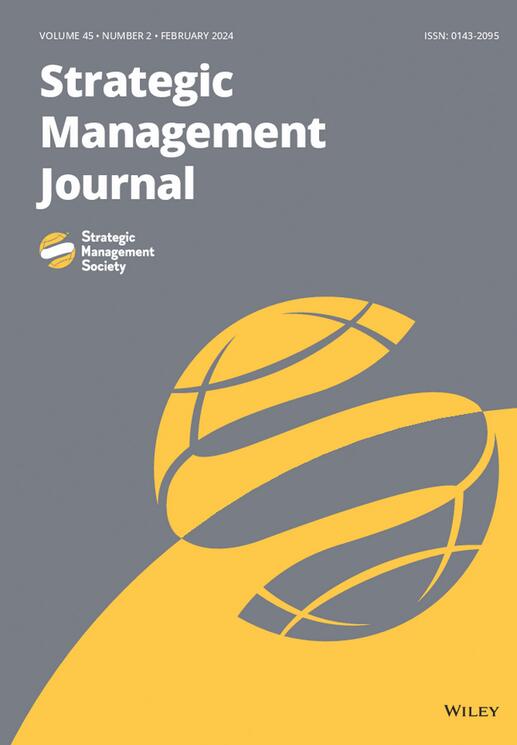Resource reallocation across successive systemic innovations: How Rolls‐Royce shaped the evolution of the turbojet, turboprop, and turbofan
IF 7.2
1区 管理学
Q1 BUSINESS
引用次数: 0
Abstract
Research SummaryDespite the importance of在连续的系统创新中重新分配资源:罗尔斯-罗伊斯公司如何塑造涡轮喷气发动机、涡轮螺旋桨发动机和涡轮风扇发动机的发展历程
研究摘要尽管资源重新配置在塑造各种战略结果方面非常重要,但战略学者对企业在连续的系统创新中重新配置资源的过程关注有限。为了探索这些过程,我们对罗尔斯-罗伊斯公司在三项不同的系统创新中所扮演的角色进行了深入的历史案例研究,这三项创新标志着民用航空工业从活塞发动机向喷气发动机的过渡:涡轮喷气发动机、涡轮螺旋桨发动机和涡轮风扇发动机。分析有助于解释罗尔斯-罗伊斯公司如何以及为何能够重新分配现有的非规模自由组织和技术资源,从而发挥核心作用。本研究的一个重要发现是将功能模块的横向转移确定为一个关键过程,尤其是在系统创新的萌芽阶段。分析还强调了特定的组织安排,尤其是企业的整合能力,在影响资源重新分配的有效性方面所起的作用。通过深入研究航空发动机研发的技术层面,并探讨为什么罗尔斯-罗伊斯公司有能力成功地将关键功能模块整合到不同的模块层面,我们阐明了技术与组织之间的关系,这种关系是资源重新配置的基础--这一话题在战略文献中很少受到关注。
本文章由计算机程序翻译,如有差异,请以英文原文为准。
求助全文
约1分钟内获得全文
求助全文
来源期刊

Strategic Management Journal
Multiple-
CiteScore
13.70
自引率
8.40%
发文量
109
期刊介绍:
At the Strategic Management Journal, we are committed to publishing top-tier research that addresses key questions in the field of strategic management and captivates scholars in this area. Our publication welcomes manuscripts covering a wide range of topics, perspectives, and research methodologies. As a result, our editorial decisions truly embrace the diversity inherent in the field.
 求助内容:
求助内容: 应助结果提醒方式:
应助结果提醒方式:


